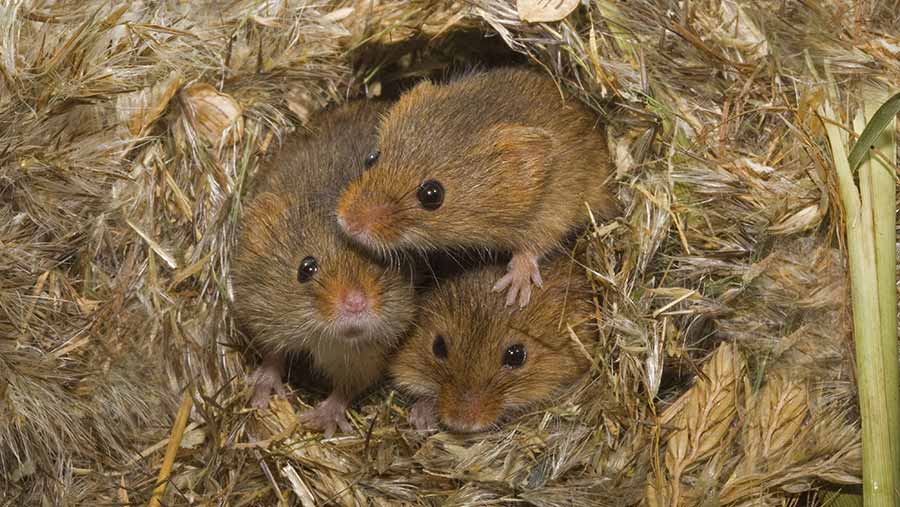Farmers help bring back rare harvest mice to Hampshire
 © FLPA/Rex/Shutterstock
© FLPA/Rex/Shutterstock Rare harvest mice – an iconic emblem of the British countryside – have been rediscovered in a Hampshire village where the species was thought to be extinct.
Local farmers formed a “farmer cluster” group in the village of Selborne to protect the wider landscape, rather than individual farms.
Together they planted hedges and maintained grass headland around arable fields to create habitats for birds, small mammals and insects.
Looking beyond their own fields, the farmers joined forces with volunteers to carry out surveys of field mice nests in an area covering 28sq km around the village.
Harvest mice, immortalised by Beatrix Potter, were last seen in the village in 1990. However, surveys in 2014-15 found 472 harvest mice nests dotted around the village.
Defra secretary Liz Truss said farmers in Selborne should be congratulated for their “innovative approach” to managing the land for the good of the environment and local wildlife.
See also: Book now for ID days ahead of farmland bird count
Ahead of a visit to Portsmouth to assess the work being done on flood defences on Friday (22 January), Ms Truss dropped in at Norton Farm, in Selborne, to find out about the project.
Local farmer Kate Faulkner, a director of Norton Farm, told the minister: “The majority of farmers around here are in environmental schemes. A lot of us have got 6m grass margins, which are ideal for the harvest mice.
“We also see barn owls around here. You can actually see them tracking around the field margins. The presence of this species has been indicating harvest mouse populations.”
In response, Ms Truss said the project was very much in line with a new Defra 25-year Environment Plan, due to be published later this year.
She explained how the plan will aim to conserve the environment by boosting co-ordination and encouraging people to work more closely together, which is “exactly what this farmer cluster model is achieving”.
Ms Truss said: “We want to integrate the work of the Environment Agency, Natural England and all that Defra does at a local level much more.
“For example, Countryside Stewardship is linked to flood alleviation schemes – where that’s relevant – and also to Nature Improvement Areas.
“I think we can improve farm productivity and biodiversity at the same time, and do things like help flood alleviation.”
One of nine farmer cluster groups set within England, the Selborne group consists of 11 farmers, covers 4,000ha and is led by the Game & Wildlife Conservation Trust (GWCT).
GWCT farmland biodiversity adviser Peter Thompson, who helped set up the Selborne cluster group, said: “Farmers in this group loved the fact that we started with them.
“They like this bottom-up approach rather than being told from up above, ‘we want you to do this’.
“When you get a group of farmers together, they feel they have ownership of the project, then they will do far more collectively than they would do individually. I think this approach is key going forward.”
Natural England is providing financial support for the project, which is working with the South Downs National Park as part of the Selborne Landscape Partnership.
The harvest mouse – micromys minutus – was first distinguished as a species in 1767 by famous naturalist Gilbert White, who was born and lived in Selborne.
